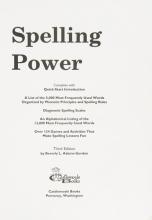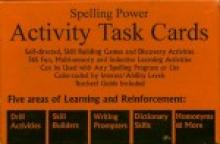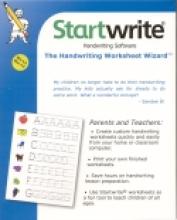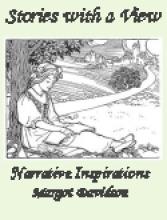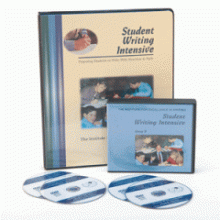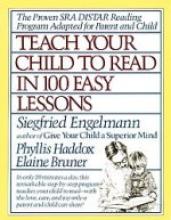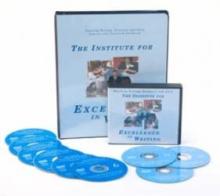Language Arts
Sound Beginnings
The program includes everything you will need including a 500+ page Bible reader, audio tape, flash cards, notebook, parent manual, handwriting paper, worksheets, and a pencil and gripper. Most of the program is non-consumable and could be used with any other children you may have. The lady who developed this modeled it (with her improvements) off of the Spalding method (i.e. Writing Road to Reading). She is a Catholic homeschooling mom with a Montessori background.
Note: The author of this program has used a Protestant Bible because the only Catholic one available that was designed for phonetic readers had just as many (if not more) theological errors as the Protestant one. The introduction to this program provides information on which passages should be corrected.
Spelling for Young Catholics
Seton Home Study has published a full line of Catholic spelling texts. Unfortunately, we have a difficult time providing reviews because we wish only to review the most recent editions and Seton revises their books frequently. You may view sample pages of these books on Seton's Website.
Spelling Power
This review of Spelling Power includes a comparison with Phonetic Zoo and My Catholic Speller.
Spelling Power is a single volume, non-consumable resource for teaching spelling to children (and adults) of all ages. It includes over 5,000 spelling words organized by rule and difficulty level, dozens of activities to help the child remember the correct spelling, extensive notes explaining how and why the program was designed and a clear explanation of how the program is to be used.
Unique to this program is the built in review of misspelled words and the use of words that are most frequently misspelled by students on essay exams. Students also study only those words that they don't know, unlike other programs that require the student to study both familiar and unfamiliar words.
The program begins with the student taking a placement test to determine what "level" they will be using. Following placement, the student spends 15 minute each day studying spelling. Each session begins with the parent reads a list of words to the student for 5 minutes. The student spends the next 5 minutes going through a series of review stages with the misspelled words that research has found helps students retain the correct spelling. The final 5 minutes are spent in fun activities that reinforce the correct spelling of misspelled words. We have found that our children, including one who is not naturally a good speller, did not need the last 5 minute activity block.
We have successfully used this program for many years and find it particularly suitable for grades 5-7. The program is flexible in that it allows for words that the child frequently misses on their own school work to be entered on to the spelling list. We've found that in grades 5-7 the children took Spelling Power more seriously then spelling workbooks (that is, they benefited from having the teacher looking over their shoulder while they were spelling to keep them on task) and it allows them to accelerate beyond other spelling programs by focusing on just those words that they don't know how to spell and is therefore time efficient. A drawback to this program is that it is teacher intensive. This is especially a problem for large families. We resolved this problem in our own home by using My Catholic Speller in grades 2-4 and the high school level of Phonetic Zoo when the child had finished level H in Spelling Power.
My Catholic Speller is an excellent spelling program for young children. Not only does it teach them the correct spelling of many words that they will be using in their writing, but it also imparts knowledge of and an interest in our Holy Faith. Our children enjoy using this program and are able to do so independently (after reading the list words aloud with a parent.) After completing Level D, our children have entered the Spelling Power program at above grade level. My Catholic Speller is available from Catholic Heritage Curriculum.
Phonetic Zoo is reviewed separately, however it should be noted that we found Spelling Power to advance children to the high school level of Phonetic Zoo rather quickly. There have been some debates about the appropriateness of the "rules" found in Spelling Power. Phonetic Zoo provides different rules that were quickly learned by our oldest child (who is not naturally a good speller.) At the beginning of eighth grade he worked through the entire Phonetic Zoo high school level in 3 months and was able to apply the spelling rules in his essays. We did a follow up test to the effectiveness of Phonetic Zoo by using the final Spelling Power lists. He missed less then 5% of all words on the last two levels of Spelling Power, and the words missed were rated as college level.
Spelling Power Activity Task Cards
The Spelling Power Activity Task Cards provide a multi-sensory approach to spelling instruction. (The activity cards are coded to indicate a visual, auditory, kinetic, and/or tactile instruction style.) Such an approach gives a child multiple ways to "retrieve" the phonics rules from his "mental filing cabinet." This approach is particularly well suited for children who have trouble retaining their spelling lessons, or have learning disabilities.
Though designed to accompany Spelling Power, this program can be used with any spelling textbook or list. Providing 365 activities, it is meant as a supplement for reinforcement, rather than as a complete spelling program. Most activities take only 5 or 10 minutes, though some children will want to take more time with the game or craft cards, and require little preparation from the parent. A few of the activities are designed to be done on successive days. They are also designed to be used by an individual child, but can be easily adjusted to be worked with a partner or by a group.
The activities are broken down into five categories: Drill Activities, Skill Builders, Writing Prompters, Dictionary Skills, and Homonyms & More. The activities are well-organized so that my children are able to work the program on their own with little help from me. Each activity is printed on a 3 by 5 card and color coded by ability level. A sturdy cardboard holder keeps the cards in order. A small teacher's manual is provided, which includes teaching tips and answers.
As my children complete the activities, I have them put a sticker on the back of the card. This gives them a feeling of accomplishment, especially when they go back through the cards to see how much they have done so far in a school year. Because there is such an abundance of activities, it is not necessary to do each and every activity. I let my children pick and choose their activity for a particular day. Since it is used as a supplement, I don't see any reason to be rigid in implementing the activity task cards. Instead, make it fun and introduce it to your children as a game to be played.
Teacher's Manual included
Startwrite Handwriting Software
System Requirements: 16 MB Ram, 20 MB Hard Disk
This is an elegantly simple computer program that resides on your hard drive just like an ordinary word processor. It allows parents and teachers to print out handwriting pages in a variety of handwriting styles, sizes and fonts. Some of your options include:
- a center dotted line
- solid text, dotted text, dashed text or text with arrows showing the proper writing direction
- how dark you want the writing printed
- a variety of fonts including standard print, italic and cursive
- Landscape or Portrait orientation
- how large you want the text to be
Please note that the user agreement allows for use on just one computer. They do offer package deals for multiple computers. You can see more about this product at http://www.startwrite.com
CD ROM for Windows 95 & above / Mac OS 8.1 & above
Stories with a View, Narrative Inspirations, Selected Poetry and Paintings, Story starters for Grades 3-4
I must admit a bias. Because I have used the method suggested in Stories with a View for years with my own children, I highly recommend this resource. Why? It works! By observing and interacting with pictures and poetry, young writers are inspired to write interesting fiction.
In fact, Mrs. Davidson makes this method even easier to implement by offering discussion questions and suggested "story starters" to prompt the young writer. For example, with A Restful Tune (a painting about a shepherd boy playing a reed pipe) the questions include:
- Describe where this scene takes place?
- Who is the boy?
- What time of day do you think it is?
- What are the sheep doing while the dogs rest?
Paging through the various pictures, even the child most adverse to pen and paper should have something to say about these paintings. Some of them are truly amusing. In The Mouse by Giacomo Favretto, you can just imagine the young women squealing on the chairs at the thought of the mouse scurrying across the floor as the little boy tries to capture it in the corner.
Since younger children, preschool and kindergarten age, have very fertile imaginations, they too could use this resource, having the child dictate the story aloud. 79 pages might not seem like a lot of material at first, but as anyone who spends time writing knows, the writing process takes time and may drafts to create a polished final copy. There is more than enough material here to inspire the budding writer. Additionally, the suggestions and principles outlined here can be applied to stories, poems and paintings elsewhere too.
The Guide to Stories with a View includes an overview for the teacher, suggestions for how to incorporate this writing program into your language arts program, and directions on how to implement the program; including specific dialogue to guide and motivate the student through the writing process to a story that the student will be proud to keep in a "writing portfolio." If you have a reluctant writer, several story starters have been included in the guide for each painting or poetry selection. Your own writer may want to add some new ones to the list.
With my own children, I have mostly used pictures and picture books to stimulate them to write their own stories. Using poetry now adds another whole new dimension to draw on. With this resource, I don't have to look for paintings or poetry to inspire my children; I have it all in one place with questions to prime the writing pump. These attractive, full-color paintings and beautiful poems will stimulate great thoughts and interesting stories in even the most writing resistant child. You will be surprised by the results.
Teacher's Guide, 13 pp. Three-hole punched
Student Writing Intensive, Level B
Teach Your Child to Read In 100 Easy Lessons
The 100 EL is a direct instruction program. This means that the teacher's dialogue is scripted. The sessions are designed to take 20 minutes per day. We found them to take 15 to 30 minutes a day. If it takes any longer, I recommend to stop using the program for a few weeks to let things "jell" then go back to it. I did this periodically with both children and they did not forget any of the previous material when we went back to it.
If your child is a cuddler and loves to be read to while sitting in your lap this is an excellent program. I often thought of our schooling not as home school but as lap school. I have a nephew who was not a cuddler and did not like to sit still and be read to. His mother tried this program on him and it was a constant battle which they soon gave up.
The 100 EL uses only itself (just a book), you and the child. There are no additional workbooks, tapes or other falderal to cost you money and waste time. It is extremely easy to use. Just sit down with your child, open the book and begin reading. There is no lesson planning involved. The sounds of the letters are taught first and the names are taught only at the end. This is consistent with recommended phonics teaching. By lesson 9 the child begins to sound out written words.
An example, the sound of m has already been taught, the sound of e has been taught, I quote,"1. Touch the first ball for me. I'm going to sound out this word. then you'll say it fast. (Point to ball under m). 2.What's the first sound I'm going to say. (Touch for two seconds). (Student should say mmm (release) Point to ball under e) What's the next sound I'm going to say? (Touch for two seconds) (student should say eee). 3. Return to first ball. My turn to sound it out. (Touch under m and e as you say "mmmeee" (return to first ball) Say it fast. (Slide quickly to end of arrow.) me. 4. (Touch first ball) You're going to sound out this word, then say it fast. Sound it out. Get ready (Touch under m and e as child says mmmeee without pausing between sounds. Repeat until firm.) (Return to first ball) Say it fast (Slide to end of arrow.) me". As you can see it uses a stimulus-response method.
It progresses quickly from words to sentences to stories (all contained in the book). By the end the student is usually reading on a solid 2nd grade level. With my first daughter we did the first half in kindergarten, the second half in 1st grade concurrent with another program (The Hewitt easy readers). My second daughter did it all in kindergarten. She is an exceptionally eager reader however and now, at 6 is reading books such as "Charlotte's Web" (her current favorite).
I follow up the 100 EL with The Writing Road To Reading used along with Teaching Reading At Home which is a supplement to TWRTR. It organizes the material so it is easier to use. The 100 EL is a good background for TWRTR in my opinion. I got the idea from Berquist's Designing Your Own Classical Curriculum.

